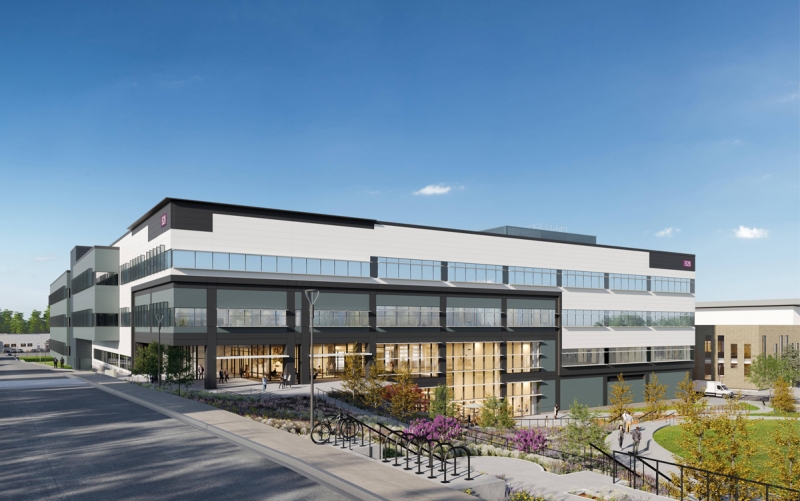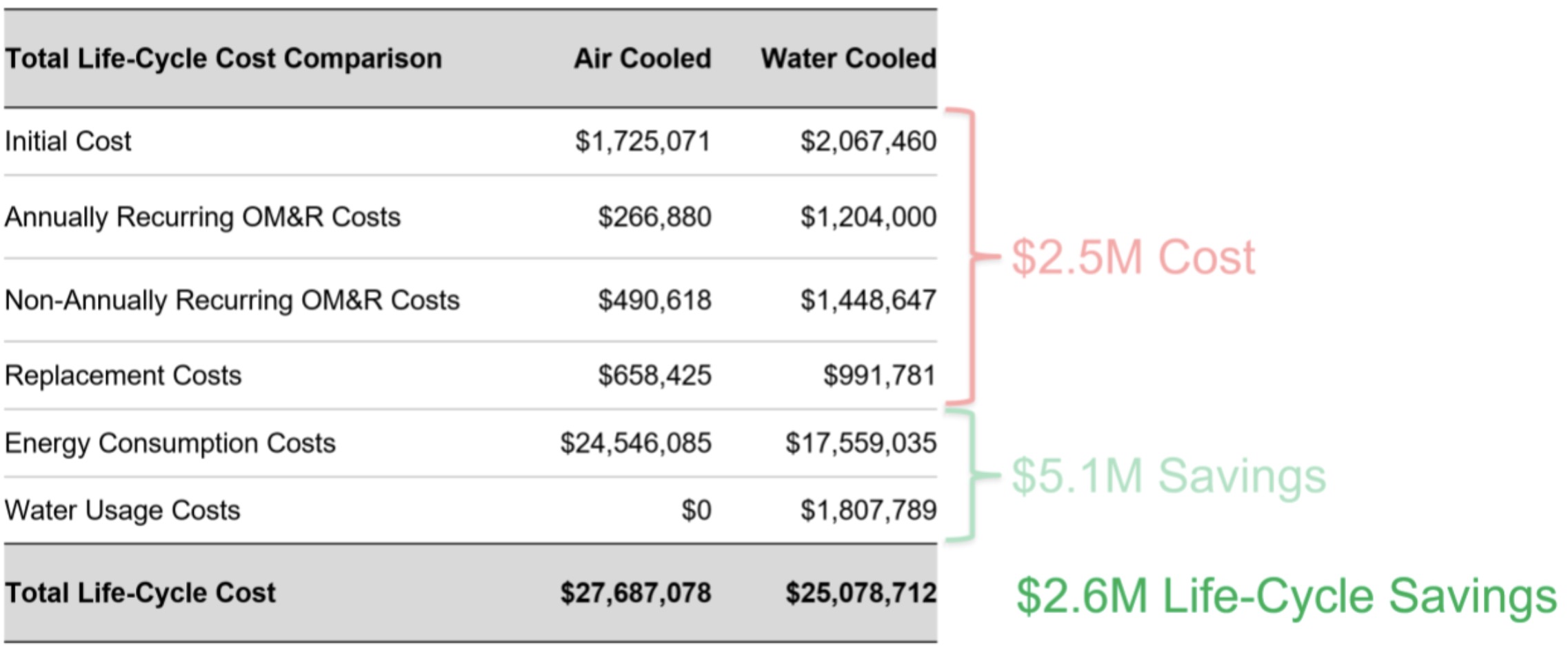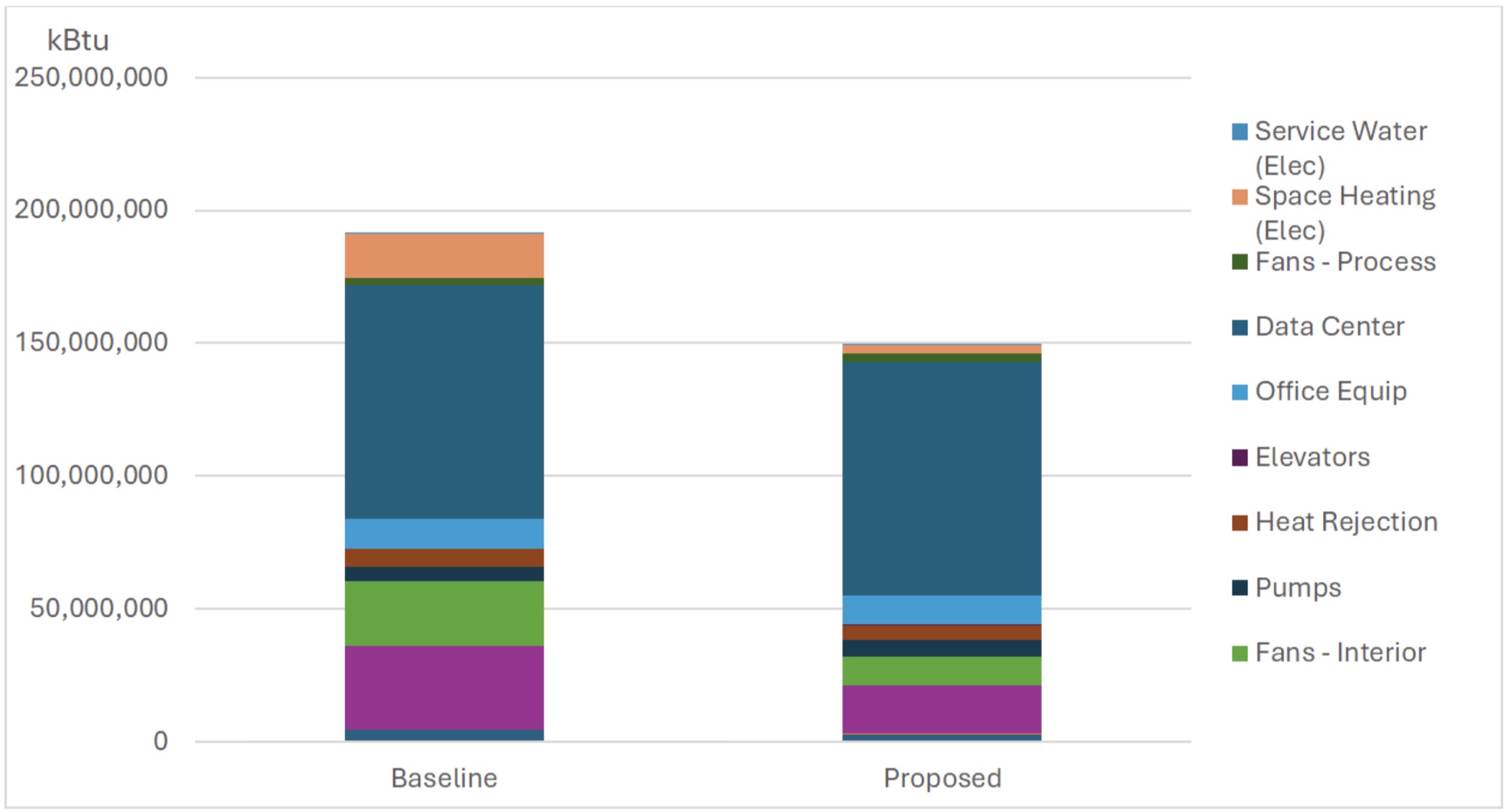
Key Takeaways:
- Surpassing energy codes not only reduces carbon emissions but delivers long-term cost savings and enhanced occupant comfort.
- Projects like Johns Hopkins University Applied Physics Laboratory show how integrating advanced design strategies can achieve energy savings and financial incentives.
- Adopting higher energy standards leads to improved productivity and community goodwill, proving the value of exceeding baseline requirements.
Capital projects require significant investments in money and time. When the budget is tight—almost always the case—the idea of approving a building design that exceeds the minimum required energy performance can seem imprudent. Still, leading companies and institutions are taking bold actions that benefit the environment and society as a whole.
Buildings contribute approximately 40% of global carbon emissions, a major cause of climate change.1 Across the U.S., most jurisdictions have set minimum performance requirements for construction projects that are based on model energy codes, namely the International Energy Conservation Code (IECC) and ASHRAE 90.1 Energy Standard. Some states, like California, have developed their own standard. Both the IECC and ASHRAE 90.1 are updated every three years to reflect ongoing advancements in building science and targets.
.jpg)
“The energy code is one of the most cost-effective ways to deliver on higher performing buildings,” says Page Building Performance Director Justin Shultz. “Its benefits include pushing us all together in the right direction.” That direction leads to net-zero energy, where buildings generate only as much greenhouse gas as they can remove from the atmosphere or offset with clean technologies to minimize the exacerbation of climate change.
Still, says Jacob Stieb, Senior Building Performance Analyst at Page, “you don’t have to use the latest technology or materials on most projects to meet code.”
Owner initiative
Since 1975, the U.S. Department of Energy (DOE) has calculated the expected building efficiency improvement with every model energy code update.2 A project meeting ASHRAE 90.1-20223, for instance, should deliver a nearly 10% improvement in site energy, source energy, energy cost, and carbon emissions savings over one designed to the standard’s 2019 predecessor.4 The energy code or standard your project must meet depends on its jurisdiction. Though the DOE has provided federal funding to help jurisdictions transition to more modern standards, some states and cities continue to administer decades-old standards—if they require one at all.
As a result, owners have the greatest say on the extent to which their projects will minimize their carbon emissions. “Historically, some market sectors, like the federal buildings, try to lead the pack and require standards that exceed the energy code,” Stieb says. “Likewise, many academic projects are net-zero energy ready and are able to accept photovoltaic panels. But for the most part, projects are very dependent on the client.”
Cost-benefit of beating the baseline
“Surpassing your jurisdiction’s energy code or standard does more than get your organization a step closer to net zero,” Shultz says. “There’s tremendous benefit in the goodwill and environmental stewardship it demonstrates to the community.”
The next question your organization will likely ask is, “How much does it cost?” A recent Pacific Northwest National Laboratory study found immediate payback for an array of project types designed to ASHRAE 90.1-2019 versus 90.1-2016, based on a simple payback model.5 When analyzing data aggregated over a range of building types and climate zones, PNNL found a 90.1-2019 project would generate a net saving of $4.12 per square foot over a 30-year life cycle.
Commercial real estate companies have also observed higher lease premiums and occupancy rates for projects certified by the U.S. Green Building Council’s LEED rating system. In 2021, Cushman & Wakefield calculated a 25.3% per square foot premium for LEED-certified Class A offices in urban centers and a 40.9% premium in the suburbs.6
Page’s engineering team is increasingly modeling the expected energy performance of its project designs for clients. “We’ll conduct a life cycle cost analysis to look at the total cost of ownership associated with different design scenarios,” Shultz says. “For instance, the cost of a more efficient system may have a premium today, but over the next 15 to 30 years of the building’s operation, it will save an owner millions of dollars.”

People benefit as well
Occupant comfort is highly dependent on a building’s HVAC systems. Over time, energy codes and standards have raised requirements for building envelope tightness, thermal bridging, and mechanical system performance. According to the DOE’s Building Energy Codes Program, the HVAC system in a large office building designed to ASHRAE 90.1-2022 would use 29% less energy than its 90.1-2007 counterpart; for medium and small buildings, the savings jump to 46% and 43%.7 “It’s simply good design to choose mechanical systems that are a little more efficient than the previous project you designed,” Shultz says.
The increase in occupant comfort stemming from these improvements can lead to significant financial savings unrelated to energy bills. A study published in Journal of Building and Environment in 2022 found that occupants of WELL-certified buildings report a 10-point increase in median productivity and a 30% increase in overall workplace satisfaction, which can mean less attrition.8
Going with a higher-performance HVAC system can also mean the downsizing of other building systems due to the reduced heating and cooling load, Stieb notes. “When you have an integrated, whole building design, you can save on mechanical systems, which trickles down to your electrical sizing,” he says. “Now you can have smaller, less expensive mechanical and electrical equipment and components, such as conduit. You can end up saving more than we predict.”
Case study in point
Large scale projects require thoughtful and deliberate consideration of energy performance and Building 28 at the Johns Hopkins Applied Physics Laboratory (JHU APL) exemplifies how surpassing standard energy codes can return economic and environmental benefits. This 400,000-square-foot science and technology facility in Laurel, Maryland is designed to accommodate the laboratory's expanding workforce and evolving programmatic needs. It will feature electronic laboratories, a 3-megawatt data center, office spaces, food services, and conferencing areas.

By integrating Building Performance Analysis (BPA) at every stage, the project team evaluated energy conversation measures (ECMs) to optimize daylighting, energy use intensity (EUI) and mechanical system performance. Early in the design analysis stage, the Page team explored four building masses, three envelope configurations, and their impacts on solar potential, heat gain and occupant comfort, resulting in a high-performance building envelope with U-values of 0.027 for the roof, and 0.053 for the walls - improvements of over 15%.
Advanced mechanical systems, including dedicated outdoor air systems (DOAS) with total enthalpy heat recovery wheels paired with high-efficiency chillers serving chilled beams significantly improved energy performance. These upgrades, combined with multiple chilled water temperature configurations and all electric boilers, achieved a two-year payback period while supporting efficiency gains. In total, the project delivered 21.9% energy savings across lighting, heating, cooling, and fan systems and a remarkable 47.1% decrease in regulated loads, far exceeding energy code requirements.
As a result, Building 28 secured a $1,000,000 incentive through the Empower Maryland program. It also demonstrated how integrated design and performance strategies can drive long-term environmental and economic benefits, quantifying the value of going beyond energy codes.
Wanda Lau is an award-winning writer, editor, and podcaster based in Greater Chicago. Formerly the executive editor of Architect, she has written for Residential Design, Architectural Record, Interior Design, and Dwell, among other publications.
References:
1. Bringing embodied carbon upfront. World Green Building Council. Available at: https://worldgbc.org/advancing-net-zero/embodied-carbon/
2. Model Energy Code Determinations. Office of Energy Efficiency and Renewable Energy. Available at: https://www.energycodes.gov/determinations
3. Standard 90.1-2022—Energy Standard for Sites and Buildings Except Low-Rise Residential Buildings. ASHRAE. Available at: https://www.ashrae.org/technical-resources/bookstore/standard-90-1
4. DOE Issues Updated Model Energy Code Determination for Commercial Buildings. (March 1, 2024.) U.S. Department of Energy. Available at: https://www.energy.gov/eere/buildings/articles/doe-issues-updated-model…
5. National Cost-Effectiveness of ANSI/ASHRAE/IES Standard 90.1- 2019. Pacific Northwest National Laboratory. (July 2021.) Available at: https://www.energycodes.gov/sites/default/files/2021-07/90.1-2019_Natio…
6. Green Is Good Part 2: Sustainability’s Impact on Office Investment Pricing. (December 2021.) Cushman & Wakefield. Available at: https://cw-gbl-gws-prod.azureedge.net/-/media/cw/americas/united-states…
7. End-Use Breakdown Analysis Standard 90.1-2022. Pacific Northwest National Laboratory. Available at: https://public.tableau.com/app/profile/doebecp/viz/End-UseBreakdownAnal…
8. Ildiri N, et al. (2022). Impact of WELL certification on occupant satisfaction and perceived health, well-being, and productivity: A multi-office pre-versus post-occupancy evaluation. Building and Environment. Vol: 224, p.109539.
